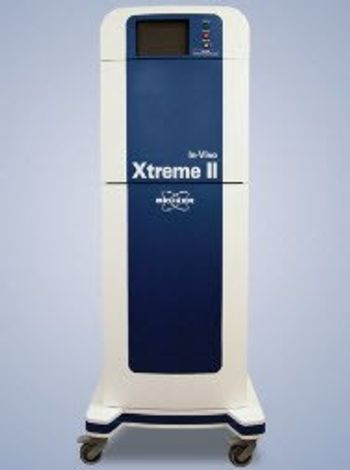
Bruker’s recently introduced preclinical in vivo imaging system –In -Vivo Xtreme II™ – is accelerating the preclinical research into infectious diseases being undertaken at the Institute of Microbiology at the University of Lausanne, Switzerland. Infectious diseases are the second leading cause of death worldwide. Therefore, gaining a deeper understanding of the dynamics of infection as well as developing new, more effective treatment options remains a major focus for researchers and pharmaceutical companies worldwide.
The new In-Vivo Xtreme II is an optical imaging system that incorporates five imaging modalities as standard on one instrument, providing co-registration of molecular events based on Bioluminescence, Fluorescence, Cherenkov radiation, Direct RadioisotopicImaging (DRI), and X-ray imaging. Breakthroughs in camera technology, animal support, as well as a fully integrated anesthesia solution characterize the unique performance of the instrument. These features combine to offer flexibility and optimized animal care and end-user safety, whilst achieving highest levels of sensitivity.
Following the first installation of the system in Prof. Dr. Dominique Sanglard’s laboratory in Switzerland, the In -Vivo Xtreme II is being used with a mouse model to understand the dynamics and progression of the yeast Candida albicans infection, and to test potential therapies. Professor Sanglard said: “In our research we face two distinct sets of challenges: Firstly, we want our mice to be housed in optimal conditions when imaging, with the ability to perform anesthesia in a controlled manner. Secondly, we want to be able to see and measure how the infection progresses in mice tissues even with low fungal cell burdens. By utilizing Bruker’s In -VivoXtreme II, mice are processed in a controlled and efficient workflow. This is a result of the well-designed SPF (Specific Pathogen Free) chambers and the integration of the anesthesia system, which also protects the end-user from being exposed to harmful agents. The sensitivity of the In-Vivo Xtreme II is extremely high, enabling us to detect very low levels of Candida albicans cells within the kidney and other tissues. This allows us to observe disease progression accurately and to explore where any infection may persist after antifungal therapy.”
“Our goal is to provide researchers with the best preclinical imaging tools,” added Dr. Wulf I. Jung, President of Bruker’s Preclinical Imaging Division. “In vivo small animal optical imaging is an essential tool within Bruker’s preclinical imaging portfolio. The design of the new In -Vivo Xtreme II offers various innovations and enhancements, and we are excited that the system has proven its value and satisfied the needs of Professor Sanglard and his team.”
